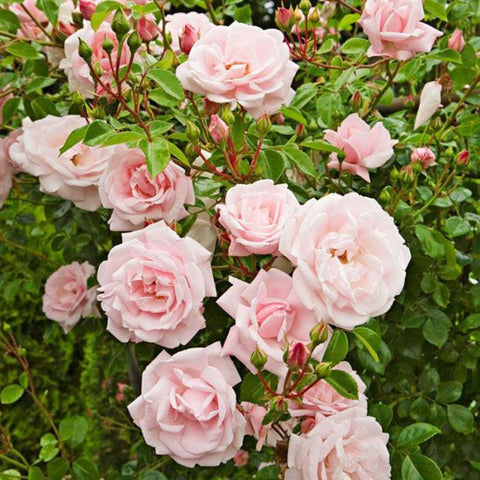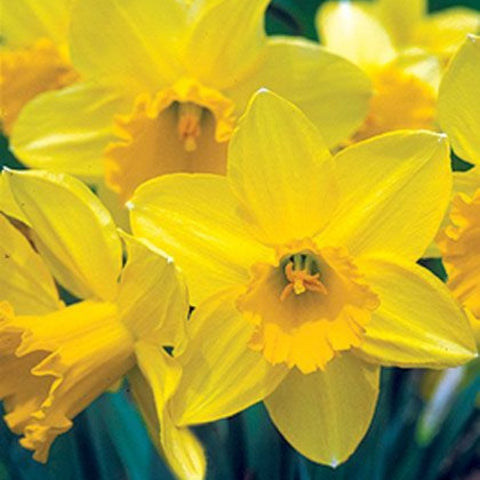Blog Post - Plant Daffodils in Spring

Spring is a time of renewal and rejuvenation, and one of the best ways to bring the beauty of the season to your garden is by planting daffodils. These vibrant and cheerful flowers are a beloved symbol of spring, with their sunny yellow petals and delicate fragrance. In this article, we will guide you through the process of planting daffodils in spring, from selecting the right bulbs to caring for them throughout the season.
Selecting Daffodil Bulbs: A Key to Success

When it comes to planting daffodils, the first step is choosing healthy and high-quality bulbs. Look for bulbs that are firm and free from any signs of rot or mold. It's also a good idea to select bulbs that are large, as they tend to produce larger and more vigorous flowers.
Furthermore, daffodils come in a variety of sizes, colors, and species, allowing you to create a truly unique and diverse garden. Consider selecting bulbs with different blooming periods to enjoy a prolonged display of daffodil flowers throughout the spring season. Choose from traditional yellow daffodils, romantic white varieties, or even unique pink or orange daffodils for a splash of color.
When deciding on the planting location for your daffodils, keep in mind their sunlight, soil type, and drainage preferences. Most daffodils thrive in full sun to partial shade, and they prefer well-drained soil. Take note of any existing trees or shrubs that may cast shade on your planting area and choose a spot that receives at least 6 hours of sunlight daily.
Preparing the Soil: Lay the Groundwork for Success

The ideal soil conditions for daffodils are well-drained, moderately fertile soil. Before planting, it is essential to prepare the soil to ensure that it is loose and crumbly, allowing the bulbs to establish strong root systems.
Start by removing any weeds or grass from the planting area. Dig the soil to a depth of 12-15 inches, breaking up any clumps and removing rocks or debris. If your soil is heavy or clay-like, consider adding organic matter, such as compost or well-rotted manure, to improve its drainage and fertility. You can also incorporate a slow-release bulb fertilizer according to the package instructions to provide essential nutrients for the growing daffodils.
Planting Techniques: Timing and Precision

Timing is crucial when it comes to planting daffodil bulbs. The ideal time to plant daffodils is in the early to mid-fall, giving the bulbs enough time to establish their root systems before the ground freezes. However, if you missed the fall planting window, don't worry! Spring planting is still possible, as long as you are mindful of the bulbs' needs.
When planting daffodils in spring, choose a location with well-drained soil where the bulbs will not sit in standing water. Dig a trench or individual holes for each bulb, making sure to place them with their pointed ends facing up. As a general rule, plant daffodil bulbs at a depth of 6-8 inches and space them about 4-6 inches apart to allow for proper growth and airflow.
It's essential to protect your newly planted bulbs from pests and adverse weather conditions. Consider covering the planting area with wire mesh or placing chicken wire on top of the soil to deter critters like squirrels from digging up the bulbs. You can also apply a layer of mulch on top of the soil to insulate the bulbs and prevent weeds from competing for nutrients.
Caring for Daffodils: Nurturing Beauty

Watering is crucial for the initial establishment of daffodil bulbs and throughout their growing season. Provide enough water to keep the soil consistently moist but not waterlogged. Avoid overhead irrigation, as wet foliage can lead to fungal diseases. Once the daffodils have finished blooming, gradually reduce watering to allow the bulbs to go dormant.
Mulching is a beneficial practice for daffodil care, as it helps conserve moisture, regulate soil temperature, and suppress weeds. Apply a layer of organic mulch around the daffodil plants, leaving a small gap around the stems to prevent rot.
Deadheading, or removing the spent flowers, not only keeps the garden tidy but also encourages healthy bulb development. Once the daffodils have bloomed, snip off the faded flowers just above the foliage. However, leave the foliage in place until it turns yellow and withers naturally, as it provides vital energy for next year's blooms.
Dividing and Transplanting: Spreading the Joy

Over time, daffodil bulbs tend to multiply and form clumps. When the clumps become overcrowded, they may produce smaller blooms or not bloom at all. Dividing daffodil clumps is a necessary process to maintain their vigor and ensure continued blooming.
The best time to divide daffodil clumps is in late summer, once the foliage has died back. Carefully dig up the clump, taking care not to damage the bulbs. Gently separate the bulbs and replant them in a new location or share them with friends and family to spread the beauty of daffodils.
Troubleshooting Common Issues: Overcoming Challenges
Like any garden plant, daffodils are susceptible to pests and diseases. Common problems include aphids, slugs, and bulb rot. To combat these issues, monitor your plants regularly and take prompt action if you notice any signs of trouble. There are numerous organic and chemical insecticides and fungicides available that can help protect your daffodils.
Remember to maintain a clean and tidy garden, removing any dead plant material and disposing of it properly. Good garden hygiene helps prevent the spread of diseases and reduces the potential for pest infestations.
Showcasing Daffodil Varieties: A Kaleidoscope of Beauty

Daffodils come in a staggering array of varieties, each with its own unique features and characteristics. From classic yellow trumpet daffodils like 'King Alfred' to delicate white varieties like 'Thalia' and 'Mount Hood,' there is a daffodil for every taste and preference.
Consider experimenting with different varieties to create a stunning display in your garden. Mix early blooming daffodils with mid or late blooming varieties to extend the flowering season and enjoy their beauty for a longer period. With their vibrant colors, enticing fragrances, and graceful blooms, daffodils are sure to bring joy and cheer to any garden.
Conclusion: Embark on a Daffodil Planting Journey
Planting daffodils in spring is a delightful and rewarding experience. By following the tips and guidelines provided in this article, you can create a vibrant and captivating daffodil display that will brighten your garden and lift your spirits.
Remember to choose healthy bulbs, prepare the soil properly, and give your daffodils the care they need throughout the season. Don't be afraid to experiment with different varieties and have fun creating your own unique masterpiece.
So why wait? Embark on your daffodil planting journey and experience the burst of joy and beauty that these remarkable flowers bring to your garden.






























Comments (0)
There are no comments for this article. Be the first one to leave a message!